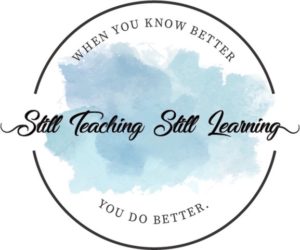
At the beginning of the year, teachers are establishing routines and helping students to feel comfortable and independent in the classroom.
WRITING:
Predictable routines and independence are especially important in the teaching of writing.
I love this visual from Two Writing Teachers about how writing workshop should look:
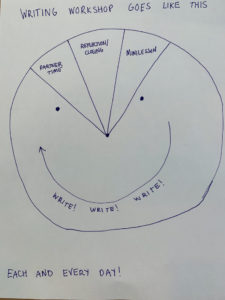


Source: Two Writing Teachers
Even if you don’t have a full hour for writing instruction, notice that students should be doing their own writing for most of the block.
There is a lot more to say about teaching writing, but this post will focus on getting the writing workshop started.



In the blog post from Two Writing Teachers, they talk about how to explicity teach your students the different parts of the workshop and what is expected during that time.
When minilessons follow a predictable structure every day, students know what to expect. They know how to come to the meeting area, how to turn and talk (and to whom), how to stay focused during the lesson, and how to transition to independent writing time.
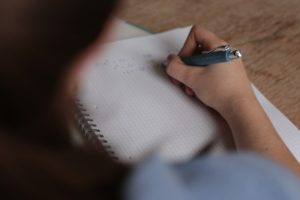


You can build independent writing stamina in the same ways you build independent reading stamina. Talk about the importance of stamina, what to do when you feel “stuck,” what they can write about when they are “done” or waiting for a conference. On the first day, start with a small amount of independent writing time, then build up gradually from there.
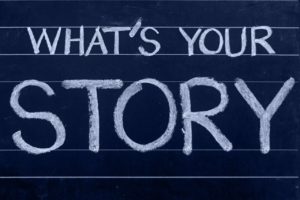


Teach your students to work with a partner during partner time. This is where they will share their writing with each other and give each other feedback. A good way to start this is to model a partner share with a student so your whole class can see what it should look like and sound like. I usually start the year by assigning partners, but they don’t stay with the same partner all year. Change them up frequently so that everyone can give and receive different feedback.
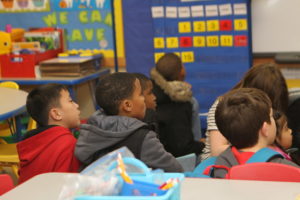


The last few minutes are for sharing and reflection. You might have a student share something they did in their writing that day. It’s especially nice when partners suggest their writing partner’s work should be shared with the class! You also might take a few minutes for students to reflect or self-assess their writing work for the day instead of sharing publicly.
*Curriculum Corner also has some great resources for getting started with writing workshop HERE.
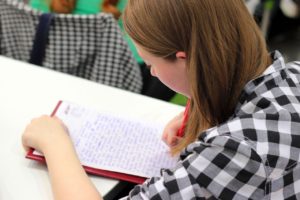


*I recently discovered this blog – Amanda Write Now. I really like her quick and easy lessons for implementing writing workshop in the classroom. I plan to try her lessons this year. Two things I especially love about her site: the short videos that she creates for some lessons and the anchor charts. The charts themselves could remain on display all year long to be referred to frequently.
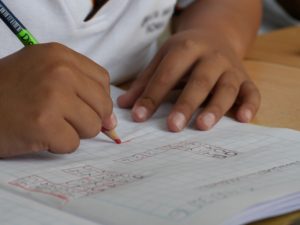


*A fun writing option for the beginning of the year is to write an I AM poem. There are lots of templates for this on Pinterest or Teachers Pay Teachers, but HERE is the template I have used many times.
This can be modified in many ways. You might have students just write one stanza, for instance. I have changed the “I hear” and “I see” to things that are real instead of imaginary. Do whatever fits your class.
*Another good option is to write a bio poem.



*There are many great picture book read-alouds to help start writing workshop. Here are a few of my favorites:
~Author
~Amelia’s Notebook
~Wallace’s Lists
~Nothing Ever Happens on 90th Street
~Something Beautiful
~Wilfrid Gordon McDonald Partridge
~The Best Story
~Q & A a Day for Kids
~My Weird Writing Tips
~Kid Authors: True Tales of Childhood from Famous Writers
*For all things writing, Jennifer Serravallo’s Writing Strategies Book is a great go-to resource.
WORD STUDY:
*This has always been a tricky one for me. My district does not have any specific recommended resource so we tend to just try random things. Not the most efficient way to teach word study. Another issue with word study is that it tends to fall “off the radar” when teachers get busy and need more time for reading or writing.
But continuing to develop decoding skills, understanding spelling patterns and building vocabulary are all so important. So what are some things that work?
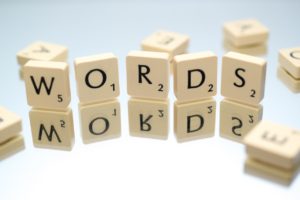


*Equipped for Reading Success by David Kilpatrick – I saw this book mentioned in a Facebook teacher group. I have a master’s degree in literacy instruction so I am well aware of the need to ensure that phonemic awareness skills and phonics skills are effectively taught in the earliest grades.
Unfortunately, those skills have been de-emphasized for many years, resulting in kids being in fifth grade and still not having the skills needed to decode multi-syllabic words.
When I got the book and read it this summer, it emphasized what I already knew. BUT — it includes an assessment that can be used with any student who is having difficulty and it gives a step-by-step intervention plan for helping those students develop the skills they need.
You might be familiar with the PAST assessment – that is the assessment that is used in this book.
This year I plan to use this book and its guidelines for working with any of my fifth graders who are lacking these necessary skills. I’ll post about this as I try it out!
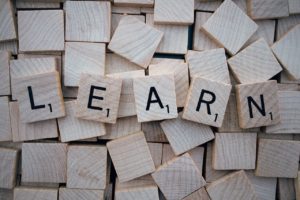


*Words Their Way – this is a great resource that I have seen mentioned over and over as one of the most effective resources for spelling patterns and word study.
This book also includes an assessment that is given to students as a “spelling test”. Then you go through the student tests and assign points for certain parts of the word that are spelled correctly, along with whole words that are spelled correctly. The assessment part is kind of tedious, but it gives great information.
When you finish, the students are grouped according to different levels of spelling understanding. There are books available with different spelling patterns lists and different activities you can do with the lists. But you can also do the entire program with the main book. If you have ever seen or heard anything about “word sorting”, it is probably referring to this book.
*I’ll write more about vocabulary in another post, but here are some great resources:
~Red Hot Root Words
~Wordly Wise
~Vocabulary Curriculum on Teachers Pay Teachers
~Greek & Latin Root Words, Prefixes & Suffixes on Teachers Pay Teachers



*Teaching grammar and writing conventions are other topics for Word Study. We used Patterns of Power last year and I really like how it teaches grammar and conventions, but in an authentic way. It uses children’s literature as examples and talks about the importance of getting students to look back at their own writing and apply what they’ve learned.
Some fun read-aloud books for word study:
~Eats, Shoots & Leaves: Why, Commas Really Do Make a Difference!
~Eats MORE, Shoots & Leaves: Why, ALL Punctuation Marks Matter!
~The Girl’s Like Spaghetti: Why, You Can’t Manage Without Apostrophes!
~Twenty-Odd Ducks: Why, Every Punctuation Mark Counts!
~Nouns & Verbs Have a Field Day
~Punctuation Takes a Vacation
~Exclamation Mark
~Semicolons, Cupcakes & Cucumbers
~parts of speech books by Ruth Heller
~parts of speech books by Brian P. Cleary
I hope you found a few ideas to try this year! Please share your own tips!
